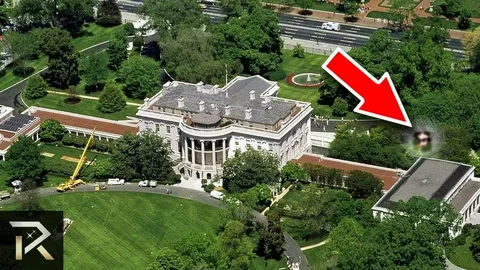Introduction
The idea of the White House being demolished is one that instantly sparks controversy, confusion, and curiosity. As the official residence and workplace of the President of the United States, the White House is not just a building — it is a symbol of American leadership, history, and democracy. Over the years, discussions and rumors around the demolition or major reconstruction of the White House have occasionally surfaced, especially in times of political tension or national transition. In this blog, we explore the truth behind the concept of White House demolition, separating fact from fiction and providing insight into its history, preservation efforts, and what the future holds for this iconic structure.
Historical Background of the White House
Constructed in the late 18th century, the White House has stood as the centerpiece of American political power since John Adams became its first presidential resident in 1800. Designed by architect James Hoban, the neoclassical building has undergone numerous renovations and expansions throughout its history. While its outward appearance has remained largely consistent, the interior has been rebuilt, updated, and modernized multiple times to meet the evolving needs of its occupants.
The White House suffered significant damage during the War of 1812, when British troops set it on fire in 1814. This event led to the first major reconstruction of the building. Over the centuries, other structural and functional changes have occurred, especially during the Truman administration, when the entire interior was gutted and rebuilt due to concerns about the building’s safety and stability.
The Truman Reconstruction and Public Reaction
One of the most extensive and critical moments in the history of the White House was the Truman reconstruction between 1948 and 1952. President Harry S. Truman and his advisers determined that the White House had become dangerously unsound. Structural beams were rotting, floors were sagging, and the risk of collapse was real.
Instead of demolishing the building entirely, the government made a calculated decision to preserve the historic exterior while completely rebuilding the interior with modern steel infrastructure. During this time, President Truman and his family moved to Blair House while the White House was essentially hollowed out and restructured from the inside. The public reaction at the time was mixed. Some favored building a new executive mansion altogether, while others were adamant about preserving the historic façade.
The Truman reconstruction proved to be a defining moment in balancing modernization with heritage preservation. It demonstrated that while the building must evolve to meet contemporary needs, its symbolic and historic value must be maintained.
Modern Preservation Efforts and Security Upgrades
In the decades since the Truman renovation, the White House has been meticulously maintained and periodically upgraded. These changes are typically related to infrastructure, technology, and security. Major structural demolition has never been considered again due to the immense cultural and historical value of the building.
Security is one of the primary concerns for modern presidents, and the White House has evolved to reflect that. Bunkers, bulletproof glass, advanced surveillance systems, and restricted airspace have all been incorporated without altering the recognizable appearance of the building. These upgrades are done discreetly, preserving the dignity and symbolism of the nation’s most iconic residence.
The White House is also listed on the National Register of Historic Places, which adds an additional layer of protection against unwarranted changes or demolition. Any significant alterations to the structure would require extensive approval, public discussion, and likely, congressional involvement.
Demolition Rumors and Political Speculation
Rumors about White House demolition often arise during times of political unrest or when satirical content spreads online. It is not uncommon to see false headlines or conspiracy theories claiming that the building is being torn down or replaced. However, there is no factual basis to these claims.
In reality, any such decision would be unprecedented and almost impossible without broad political consensus and legal authorization. The White House is not just a federal building — it is an enduring symbol of the American Republic. Any talk of demolishing it would spark widespread public debate, resistance, and legal battles.
In many cases, what is perceived as demolition may actually be large-scale renovations, temporary closures for maintenance, or even digital hoaxes. It is important to differentiate between real construction work and fictional narratives created for political or satirical purposes.
Cultural and Symbolic Importance
The White House stands as one of the most recognizable buildings in the world. Beyond its role as the home of the U.S. President, it represents stability, continuity, and American democratic values. Its architecture, location, and legacy are deeply embedded in the national identity.
Demolishing the White House would be akin to tearing down a monument to American history. The cultural and emotional weight attached to the building makes the idea nearly unthinkable. Preservationists, historians, and government officials agree that maintaining the structure’s integrity is vital to honoring the legacy of the presidency and the American people.
What the Future Holds for the White House
Looking ahead, the White House will continue to be preserved and modernized. Future updates may include environmental upgrades, more advanced security systems, or expanded accessibility features. However, none of these changes suggest that a full demolition is likely or necessary.
As sustainability and energy efficiency become more prominent concerns, the White House may lead by example in adopting green technologies while maintaining its historic character. The emphasis will remain on preserving the essence of the building while ensuring it functions effectively for future presidents and administrations.
Conclusion
The notion of demolishing the White House is more myth than reality. While the building has seen its share of structural challenges and reconstructions, especially during the Truman era, its historical significance has always driven efforts toward preservation, not destruction. Today, the White House stands not only as a functioning center of executive power but also as a symbol of American heritage.
Understanding the past and present of the White House helps clarify why demolition is not a viable or likely path. Instead, preservation, restoration, and careful modernization will continue to define the future of this national treasure.













Comments are closed